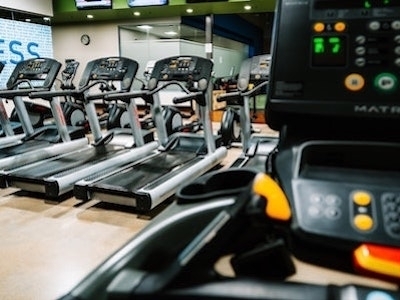How Many Calories Do You Really Burn?
March 15, 2020

You just got done with your workout and now it’s time to refuel! You’re drenched in sweat and you know you’ve put in some hard work. You’ve been craving a pizza since the weekend and went extra hard with cardio so you could dig in to that extra cheese slice for lunch. Surely, all that extra sweat burned some extra calories!
Prepare yourself: I’m about to crush your pizza dreams. Truth is, we often overestimate the amount of calories burned during a workout, while also underestimating how many calories we consume. This can lead to eating a lot more calories than you think you are.
Don’t get me wrong, cardio, and strength training have a lot more benefits than just weight loss. But if you’re working hard and trying to shrink that number on the scale, you may want to take another look at what’s on your plate.
Did you know that 150 lb person who runs a mile in 10 minutes burns, on average, 113 calories? That’s about equivalent to a banana. Insert sad face emoji here. Don’t let that discourage you, though! Exercise doesn’t replace healthy eating — but it does increase our bodies’ capability to perform. But if weight loss is your goal, food could be sabotaging you.
Here are some tips to help keep this from happening:
1- Invest in a heart rate monitor.
Find a fitness watch with a heart rate monitor. It’s the best and easiest way to assess how many calories you burn. Just punch in your information (height, weight, age, gender), and the watch measures the intensity of your workouts with a more accurate calorie burn. Once you figure out how much you’re actually burning on that run, you’ll get a better sense of how much you need each day for maintenance, weight loss, or muscle gain.
2- Be mindful about the calories you consume post-workout.
Eating certain foods right after a workout can actually help your body recover faster. Aim for sources of carbs and protein that are easily digested, like an apple with chocolate milk. You can use food logs to track your calories. Keep an eye out for serving sizes, too! They’re usually smaller than you think they are.
3- Find ways to indulge on a smaller scale.
Being healthy doesn’t mean you have to swear off all things delicious. Instead, find ways to regularly enjoy your favorite foods on a smaller scale. Eat a slice of pizza with friends, enjoy wine on date night, and have dessert every now and then.
When you know you’re going to eat something higher in the good stuff (fat, calories, sugar, etc), eat a lunch that helps to offset it (lean protein like chicken, vegetables) and drink at least 8 oz of water to help you feel fuller faster, so you don’t go overboard. Just log it in your food journal and make it fit with the rest of your goals!
Want more help conquering those calorie calculations? Schedule a virtual meet-up with one of Vitality Fitness Delivered’s personal trainers. We can help you set goals, track goals and meet your goals!